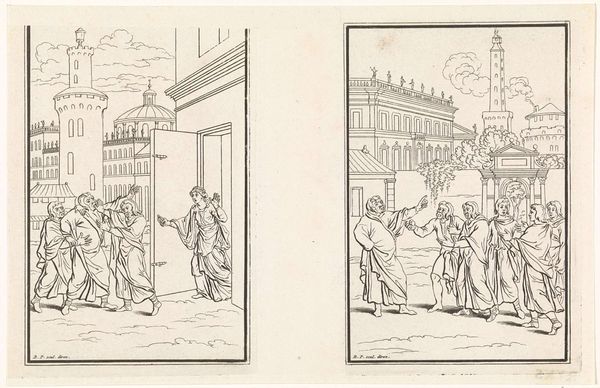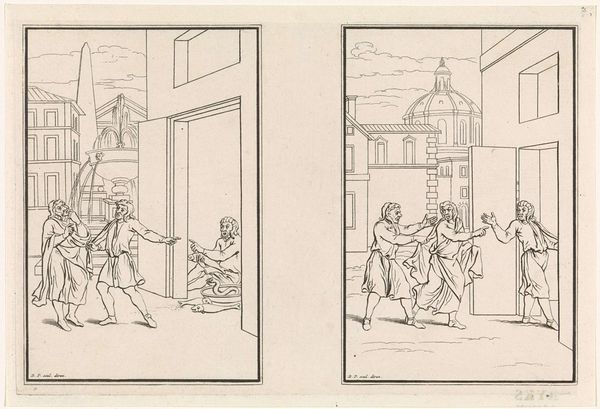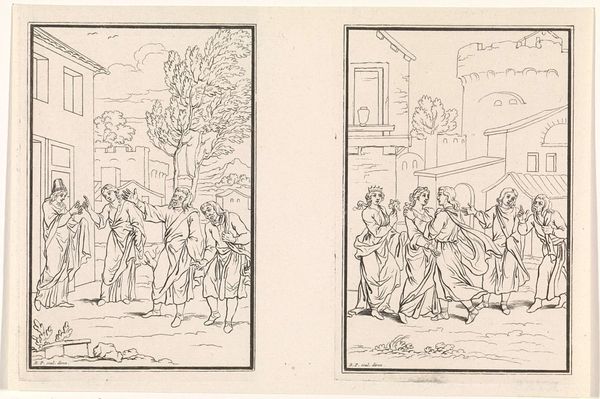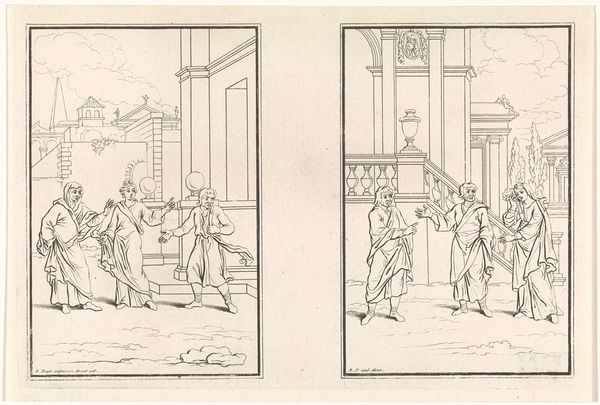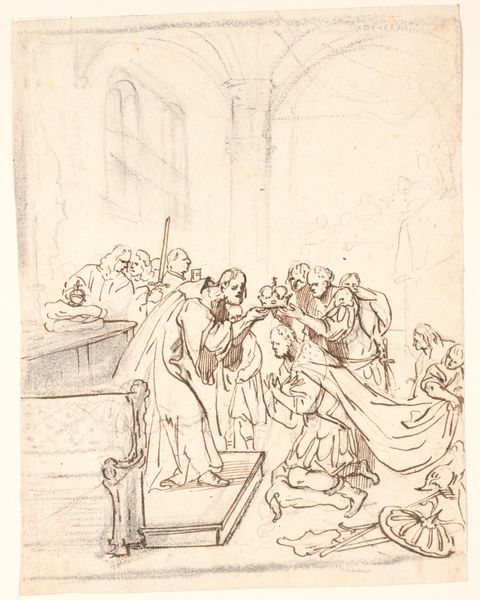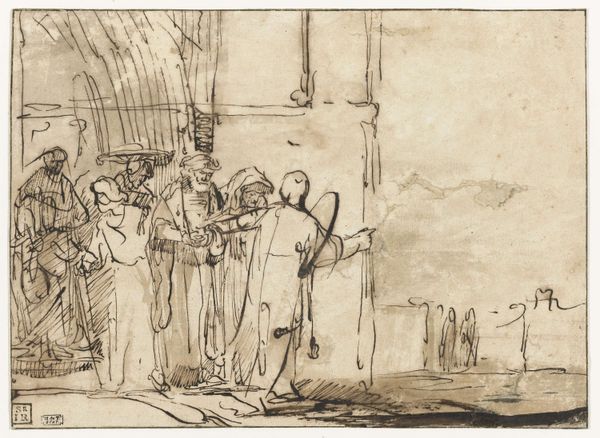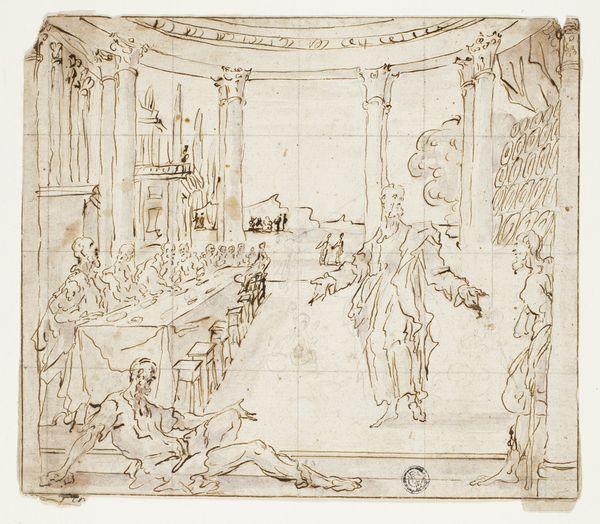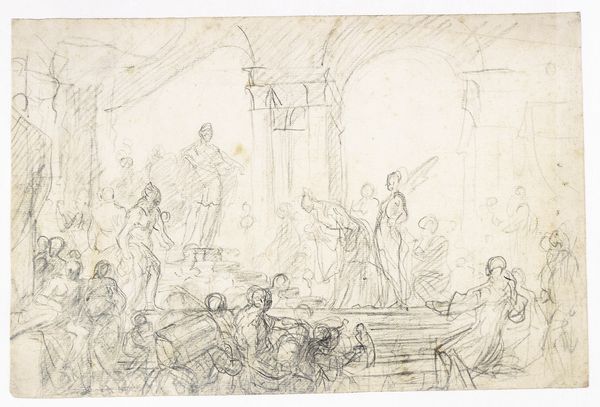
drawing, paper, ink, pen, engraving
#
drawing
#
comic strip sketch
#
narrative-art
#
baroque
#
pen sketch
#
sketch book
#
figuration
#
paper
#
personal sketchbook
#
ink
#
ink drawing experimentation
#
pen-ink sketch
#
pen work
#
sketchbook drawing
#
pen
#
history-painting
#
storyboard and sketchbook work
#
academic-art
#
sketchbook art
#
engraving
Dimensions: height 132 mm, width 168 mm
Copyright: Rijks Museum: Open Domain
Curator: This is a pen and ink drawing by Bernard Picart, created sometime between 1716 and 1718. It’s entitled, "Scène uit de komedie Andria van Terentius" – a scene from the comedy "Andria" by Terence. What strikes you about it? Editor: It feels like a stage design! All those figures lined up and presented, against fairly simple backdrops. It's got this formal, almost ritualistic feeling... what do you make of that arrangement? Curator: I think that’s a sharp observation. Picart, a renowned engraver and draughtsman of the Baroque era, has really captured a performative energy. I’m particularly fascinated by how he encapsulates narrative through posture and gesture – especially those figures mid-conversation, caught up in dramatic engagement. Editor: And that distinct classical costuming helps, of course. Togas have always signified drama and power, haven’t they? I'm curious though... why opt for pen and ink for such a staged, theatrical theme? It feels quite different to other drawings of the time. Curator: That’s what’s interesting here. While theatrical design sketches of this time, even storyboards were rare, it's not about documenting realism, it’s about something more internal. Picart uses the starkness of line to capture a sense of underlying emotion, the psychological heart of the characters perhaps. Editor: So, in a way, stripping down the visuals allows him to heighten the symbolic weight of each figure, each setting. I am just now noticing, the artist separates space on a horizontal level through a combination of outdoor/indoor division... Very much a visual statement in and of itself. Curator: Exactly, the lines become active agents in defining space, psychology and… well, maybe the humor embedded in the original play itself. The setting is staged to separate the main protagonist inside a dwelling contrasted against characters involved in direct outdoor social exchange, the use of the pen allows Picart to separate narrative on the same visual plane. Editor: It is indeed a beautiful play of dark lines across the canvas—each line helps amplify a very specific narrative component of the setting, helping draw your eyes to specific corners. It certainly prompts me to check out "Andria," and maybe all those ancient comedies where symbolic meaning wasn’t something whispered but shouted! Curator: And for me, Picart's drawing serves as a wonderful example of how line can be so emotionally evocative. Even something seemingly simple can be imbued with so much story!
Comments
No comments
Be the first to comment and join the conversation on the ultimate creative platform.


